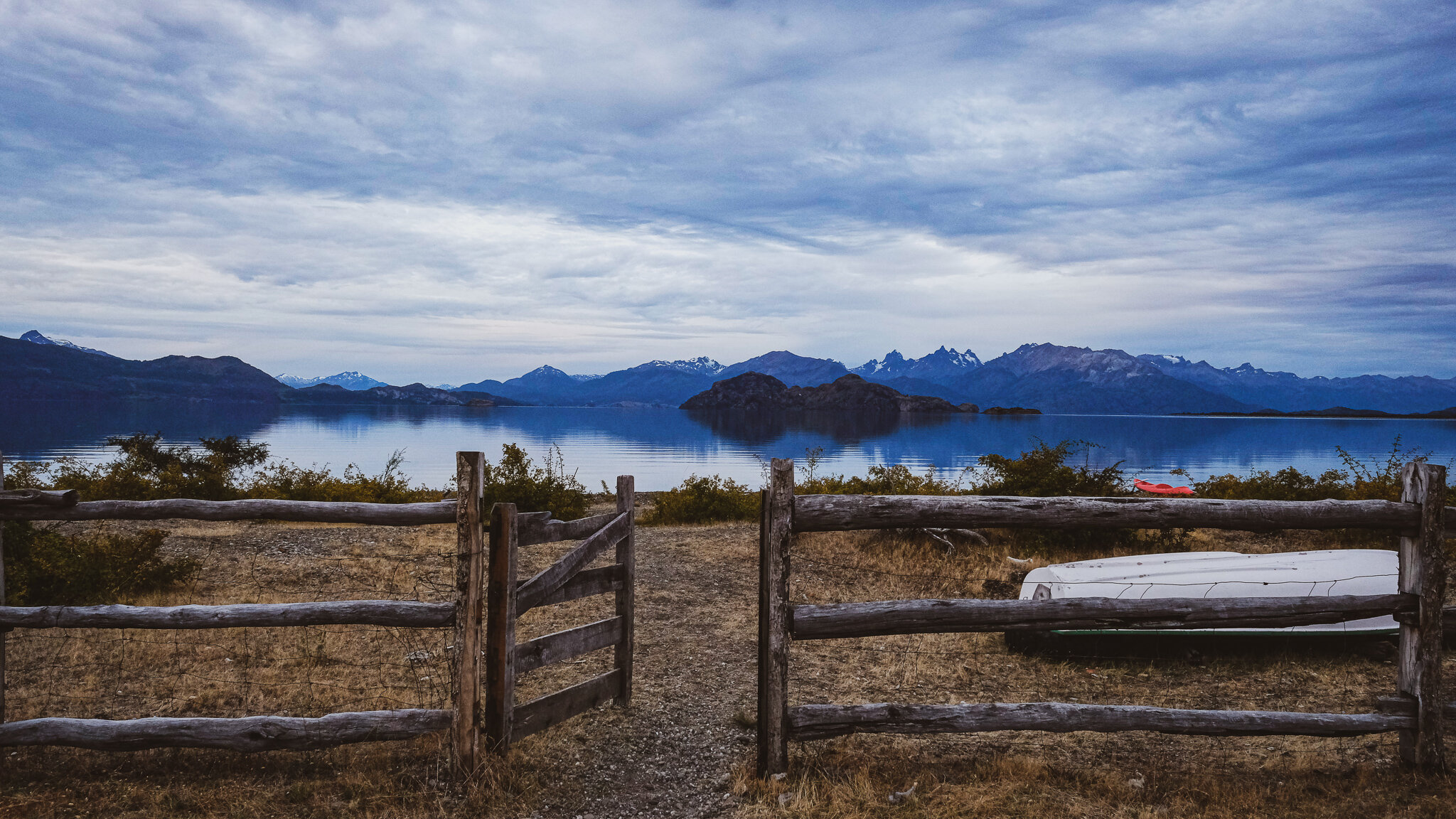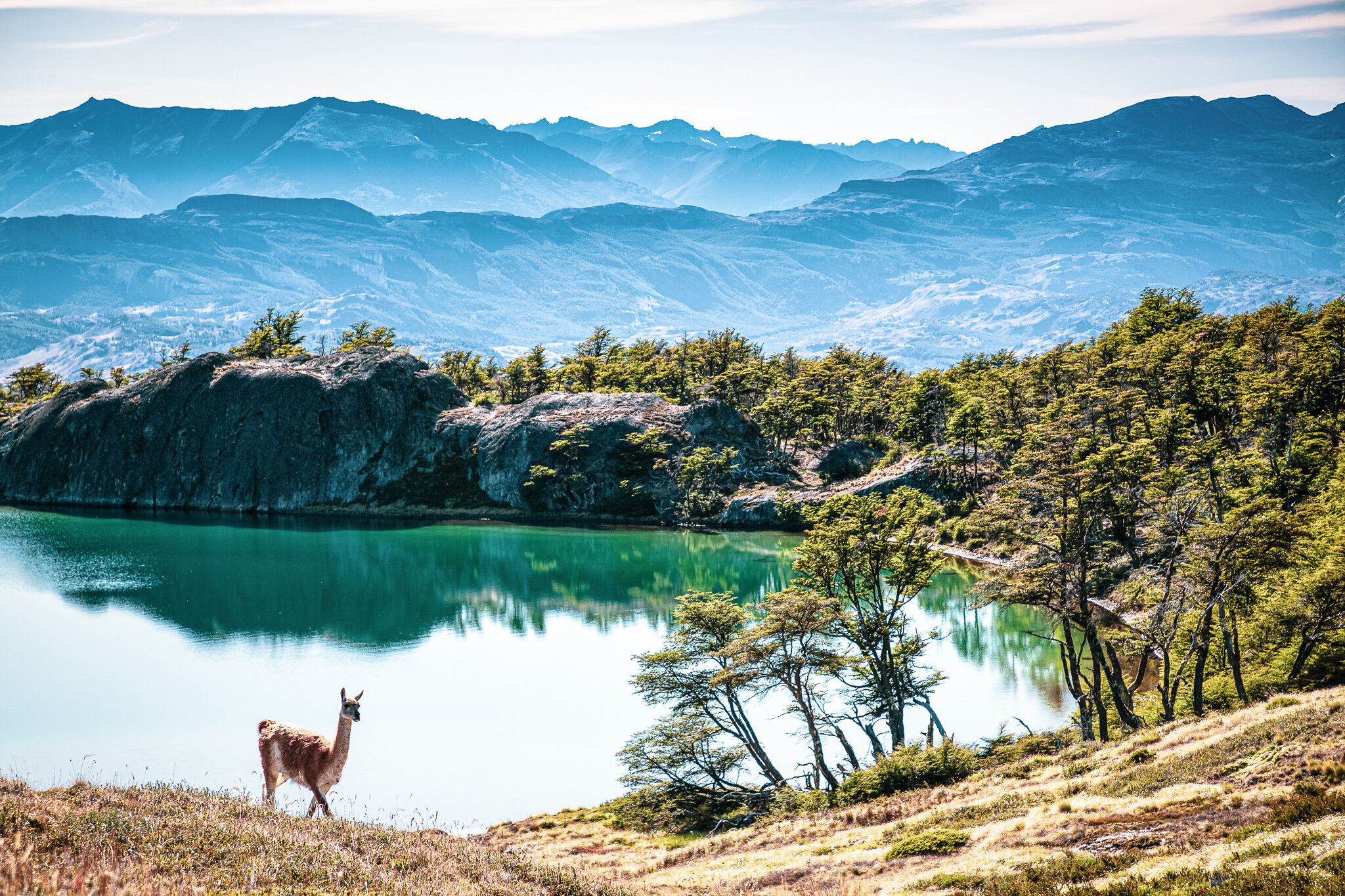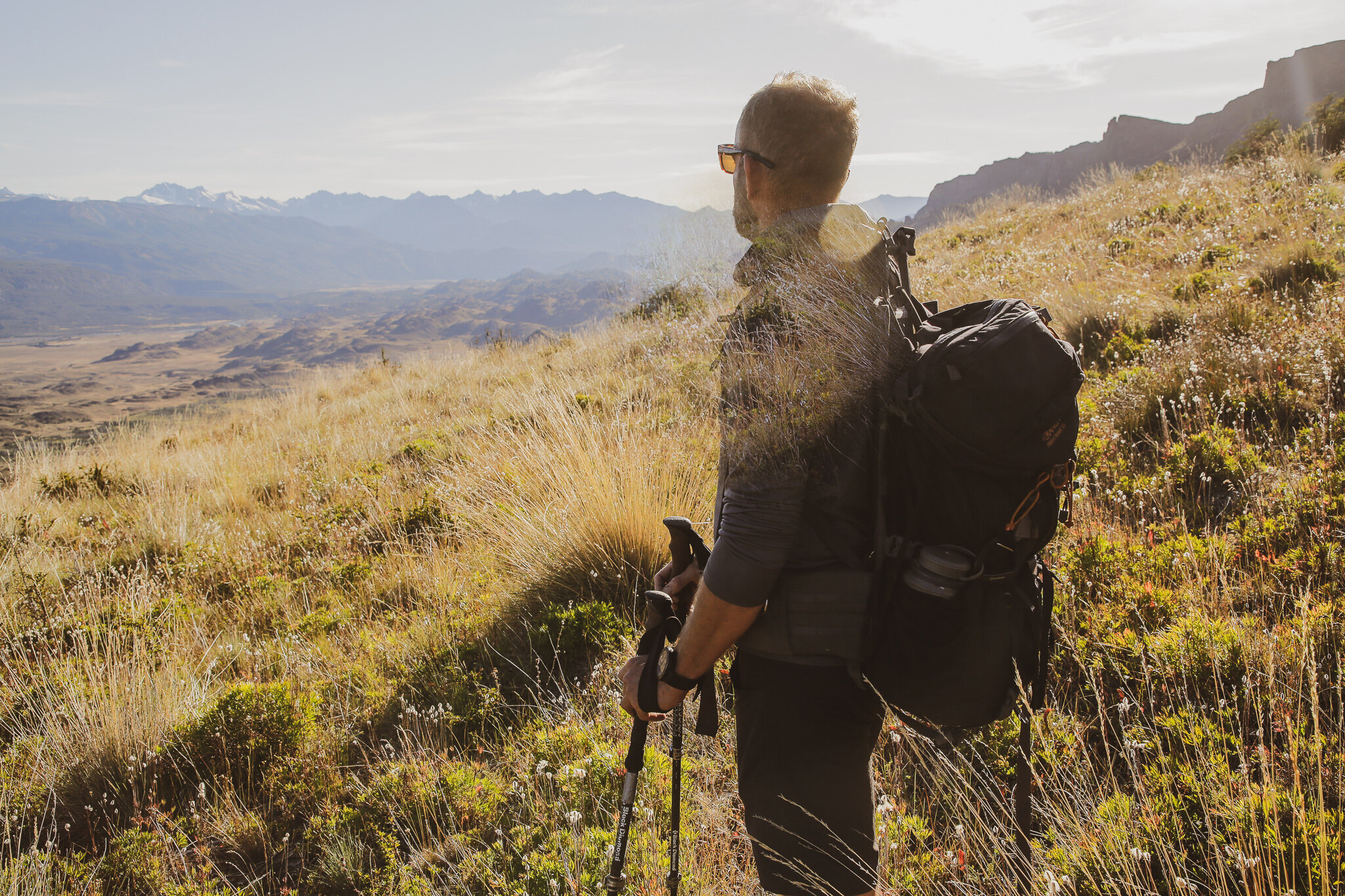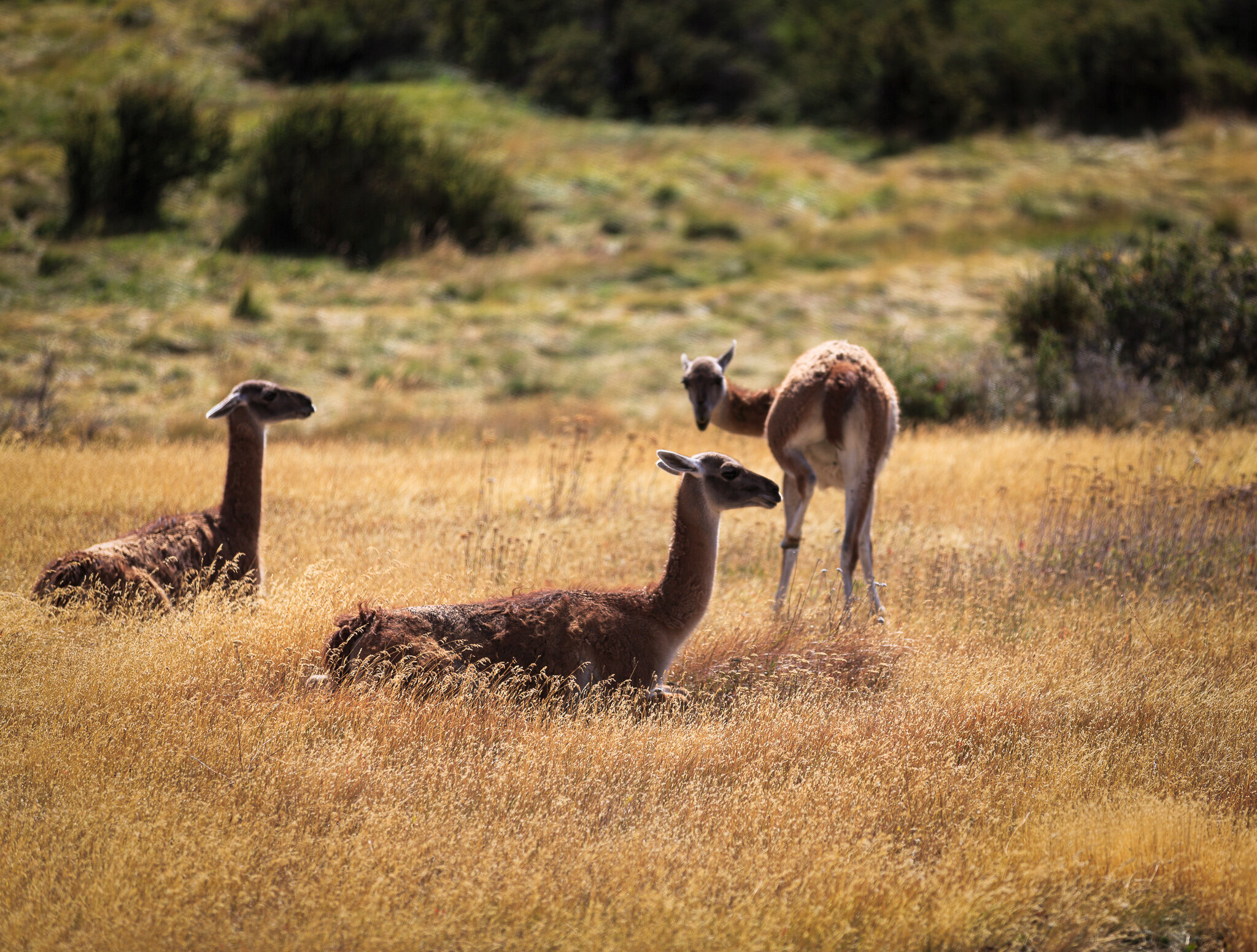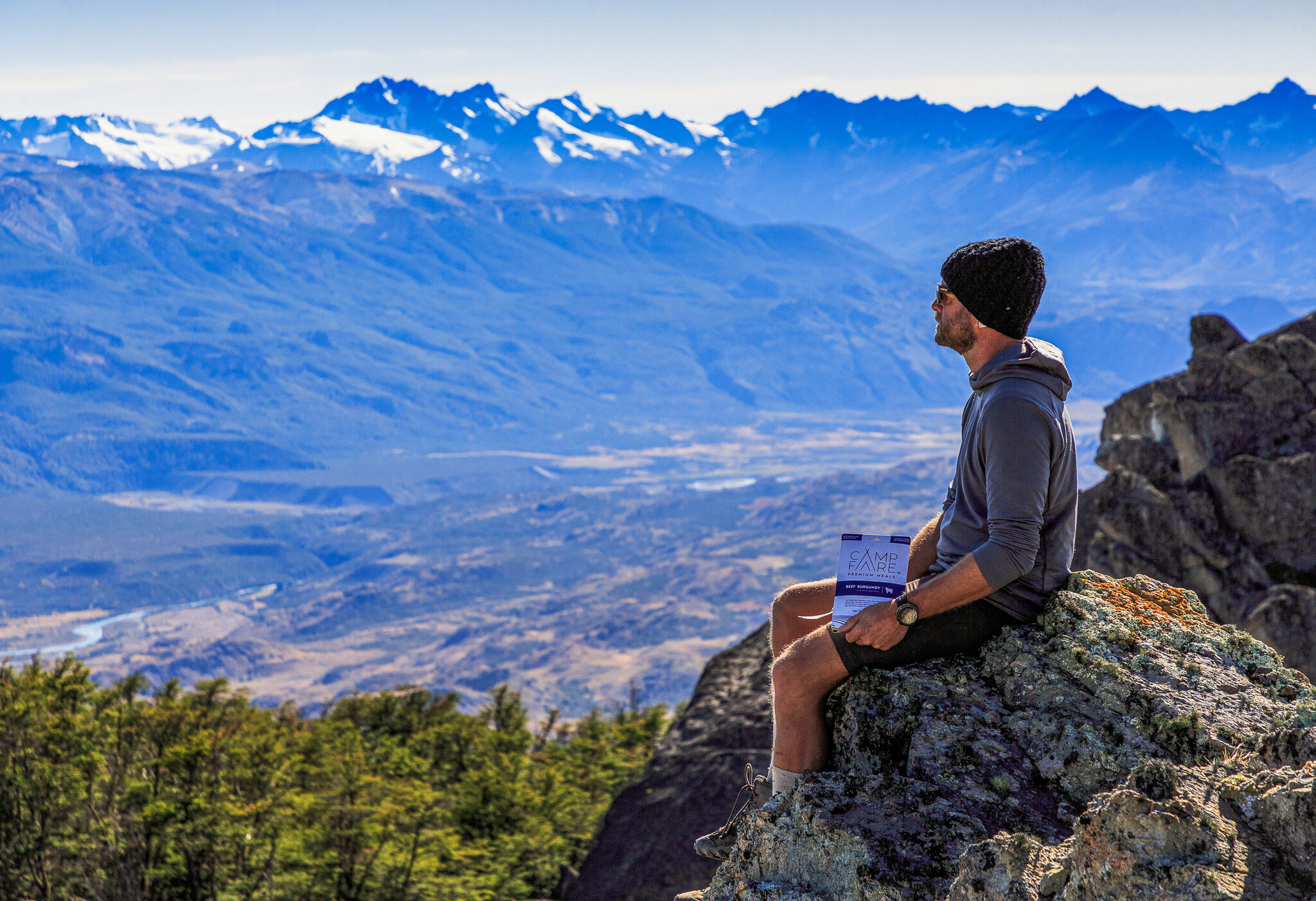TRAVELOG 14: A JOURNEY THROUGH THE REMOTE AYSEN REGION OF PATAGONIA, CHILE
Content and images from this adventure provided by Alexander Escobar and Justin Seale.
Del mundo al sur, Spanish for “from the world to the South” is a Chilean expression for both the vastness and emptiness of the country's southern region. In February 2020, in conjunction with Polartec® and Chulengo Expeditions, I set out to explore the remote Aysen region of Patagonia. As the third largest yet least inhabited region of Chile, Aysen both looks and feels like a land where even the light is bent by time. Virtually uninhabited until the late 19th century this expansive land is home to some of the most cinematic landscapes in the southern hemisphere.
After spending a night in the provincial capital of Coyhaique sorting gear (and beers), I set out via ferry across Lago Gran Carrera. This grand lake, surrounded by snow capped peaks is the second largest lake in South America and a stunning example of glacial topography. With the Argentinian border off the port beam and force 7 winds at my back I felt the rising pull and excitement of encounters yet to come.
Over the next five days I jumped off into the massive Gran Carrera nature preserve via a horse supported expedition. Guided by a number of Chulengos NOLS certified guides and Chilean Huasao (Gauchos), my team, including journalist Kelly Bastone and photographer Alexander Escobar used the aid of horses to carry equipment and provisions to move light and fast. We were awestruck by the almost primordial nature of the landscape. The majority of the mid-altitude land is covered by ancient lenga (beech) trees that are a staple of Patagonia. Higher altitude traverses are marked by prehistoric glaciers, granite scree, alpine lakes and barely discernible horse paths. This is not the Alps and traveling without a guide is not recommended.
Blessed with an unusually strong high pressure system, we quickly fell into the walking trance of the high mountains. The warm sun drenched days transitioned to cool campfire evenings and a trusty gourd of mate or a fantastic local Chilean wine. Sliding into my trusty Nemo Dragonfly™ Ultralight Backpacking Tent, I would gaze with wonder at the rising southern cross and a maze of stars for which I had no names. The final day our team descended through dense Lenga forest into glacier fed marshland followed by three tricky alpine river crossings. Exhausted but buoyant, our team piled into a local Gauchos dusty truck for a return trip to the lake.
That night was spent on a family ranch located on the shores of Lago Gran Carrera. Founded as the home to one of the lake's original ferry captains, it has been lovingly restored and updated by his grandson Diego. This bucolic agrarian paradise is home to all manner of creatures from the ranch horses and sheep to a family of proud peacocks.
Although I would have gladly idled away weeks on the ranch, the following morning our team set out down the Carretera Austral (southern way). Completed in 1988 this “Highway” links the small and dispersed settlements of the south. Our destination being Patagonia National Park, the country’s newest national park and by product of the Tompkins Conservation land preservation efforts in southern Chile and Argentina. Founded by Doug and Kris Tompkins over 30 years ago the foundation has purchased millions of acres of wilderness in order to preserve these regions ecological and biodiversity and prevent the rise of industrial agriculture and mining. These lands are now being returned to the Chilean and Argentinian government as National Parks and Preserves.
Patagonia National Park is situated in the Chacabuco Valley, a unique biological transition zone between the Patagonian grasslands and lenga forests and the alpine highlands. It is also home to herds of guancos and their adorable young the chulengo. These camelids are native to South America and the origin of the better known domesticated llama. Feeling strong underfoot from my previous trek, I set out on the spectacular 12 mile Lagunas Altas trail. Offering panoramic views of the valley below and snow capped peaks beyond, this trail is not to be missed. That evening I dined like a king at the park's outstanding and surprisingly polished El Rincon Gaucho restaurant.
No trip to Patagonia National Park would be complete without time spent in the park's amazing visitor and cultural center. A legacy of the Tompkins Foundation, the center offers both a thoughtful guide to the region's history, while emphasizing the importance of conservation and the damaging effects of human exploitation. With our hearts full of the wilderness, the team returned to the Carretera Austral and struck north for a visit to the region's famed Marble Caves and then onto our return flights to Santiago where further adventures awaited. We tested the new Aysen Polartec® Power Wool™ Hoodie that performed flawlessly across the varied climates and terrains.


















